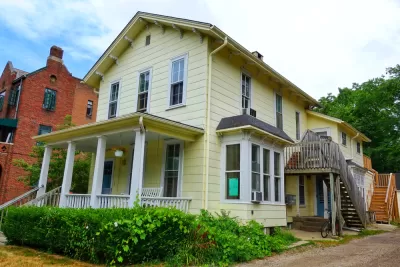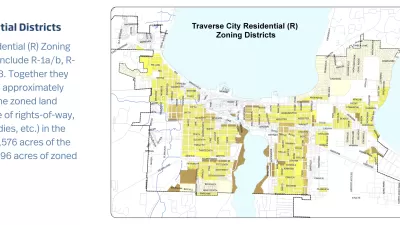After legalizing accessory dwelling units in 2016, the city of Ann Arbor hasn't added many accessory dwelling units. Some regulations designed to limit the number of ADUs developed have made the building type impossibly cost prohibitive.

"[The] Ann Arbor city council is considering ways to make it easier for homeowners to create accessory dwelling units on their property," reports Lauren Slagter.
After achieving very little development of accessory dwelling units (ADUs) since approving an ordinance to allow the construction and rental of accessory dwelling units in 2016, the Ann Arbor City Council is ready to retool the ordinance to encourage more development.
"The ordinance included restrictions intended to prevent the proliferation of ADUs across the city, and now city council thinks the restrictions may have worked too well," according to Slagter.
Most of the lack of ADU development in the city is credited to the high cost of building the units. According to Slagter, the city already dropped a previous requirement for every detached ADU to have its own water and sewer hookup, separate from the main house. Removing that requirement dropped the price of constructing an ADU by $20,000 to $30,000. Possible refinements of the city's ADU ordinance include removing maximum size regulations; removing minimum lot size requirements; allowing ADUs on lots with single-famly zones, regardless of zoning; and more.
FULL STORY: Ann Arbor looks to make it easier to build accessory apartments

Alabama: Trump Terminates Settlements for Black Communities Harmed By Raw Sewage
Trump deemed the landmark civil rights agreement “illegal DEI and environmental justice policy.”

Planetizen Federal Action Tracker
A weekly monitor of how Trump’s orders and actions are impacting planners and planning in America.

The 120 Year Old Tiny Home Villages That Sheltered San Francisco’s Earthquake Refugees
More than a century ago, San Francisco mobilized to house thousands of residents displaced by the 1906 earthquake. Could their strategy offer a model for the present?

In Both Crashes and Crime, Public Transportation is Far Safer than Driving
Contrary to popular assumptions, public transportation has far lower crash and crime rates than automobile travel. For safer communities, improve and encourage transit travel.

Report: Zoning Reforms Should Complement Nashville’s Ambitious Transit Plan
Without reform, restrictive zoning codes will limit the impact of the city’s planned transit expansion and could exclude some of the residents who depend on transit the most.

Judge Orders Release of Frozen IRA, IIJA Funding
The decision is a victory for environmental groups who charged that freezing funds for critical infrastructure and disaster response programs caused “real and irreparable harm” to communities.
Urban Design for Planners 1: Software Tools
This six-course series explores essential urban design concepts using open source software and equips planners with the tools they need to participate fully in the urban design process.
Planning for Universal Design
Learn the tools for implementing Universal Design in planning regulations.
Clanton & Associates, Inc.
Jessamine County Fiscal Court
Institute for Housing and Urban Development Studies (IHS)
City of Grandview
Harvard GSD Executive Education
Toledo-Lucas County Plan Commissions
Salt Lake City
NYU Wagner Graduate School of Public Service





























